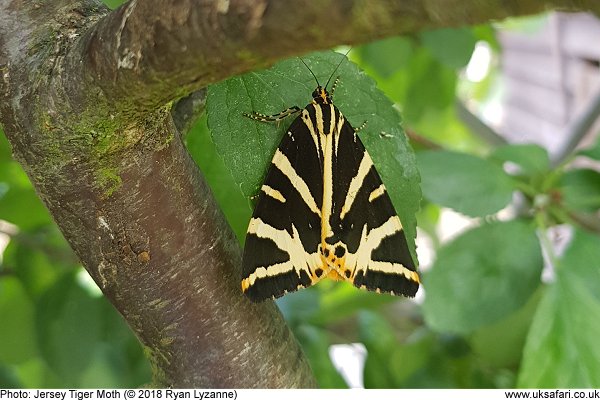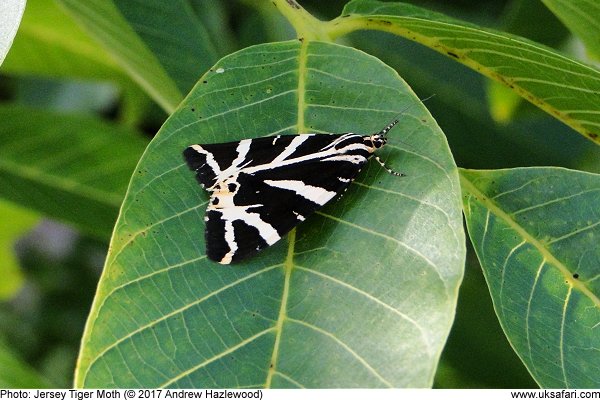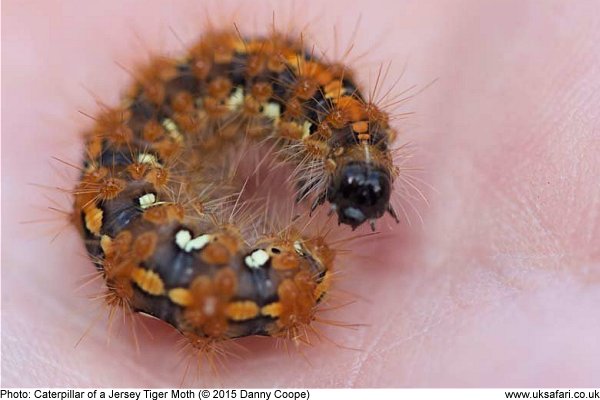 Quick Facts
Quick Facts
Scientific name: Euplagia quadripunctaria
Size: Wingspan approximately 60mm
Distribution: Found in the Channel Isles, the Isle of Wight and in Devon and Dorset. A growing population in London is thought to have been started by a single egg-laying female in 2004 (source: Tony Canning). Also a well established population in north Kent. This moth seems to be one of the winners of climate change and is expanding its range.
Months seen: June to September
Life span: Adult moths live for up to 5 months
Habitat: Gardens, woodland edges and waste ground
Food: Nectar. The caterpillars feed on nettles, dandelion and plantains
Special features: The forewings of Jersey Tigers are cream-coloured with bold black stripes. The underwings are bright orange with black patches.
Jersey Tigers fly by day in sunny weather and settle amongst vegetation when it's dull. They also fly at night and can be readily attracted to light.
The caterpillars of Jersey Tigers are black, with a wide yellow stripe along the back, and cream spots along the sides. Each body segment has a tuft of orange-brown hair. The head is black.
 Related Pages
Related Pages

 Popular Pages
Popular Pages
Amphibians, Bats, Badgers, Beetles, Birds, Birds of Prey, Bumble Bees, Butterflies, Caterpillars, Creepy-Crawlies, Deadly Spiders, Dolphins, Dragonflies, E-Postcards, False Widow Spiders, Free Newsletter, Frogs, Fungi, Garden Spiders, Glow-Worms, Grey Squirrels, Hedgehogs, House Spiders, Ladybirds, Mammals, Marine Mammals, Moths, Owls, Reptiles, Spiders, Toads, Trees, Wildlife Hospitals
© Copyright 2017 G. Bradley - UK Safari | About Us | Links | Contributors


 Jersey Tiger Moths
Jersey Tiger Moths




